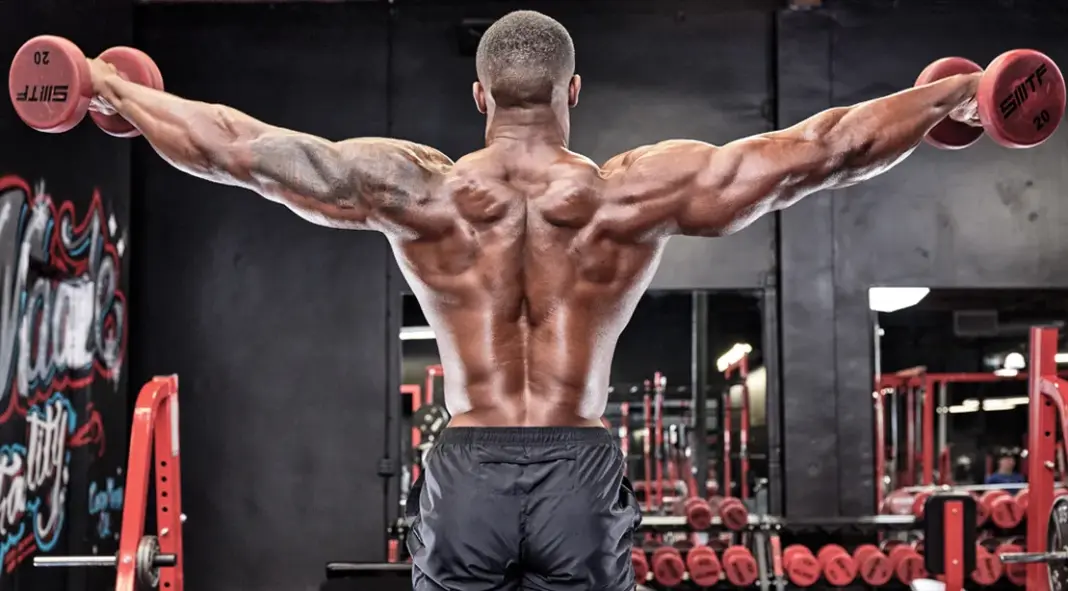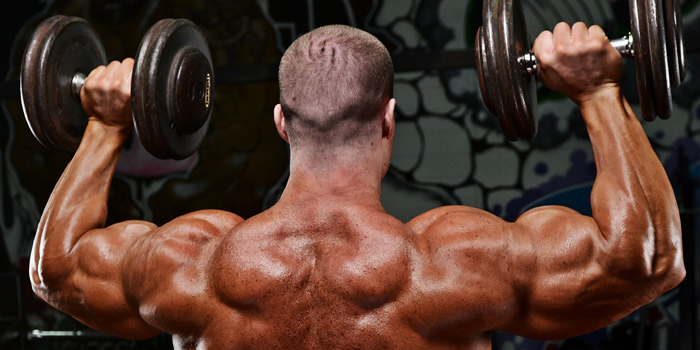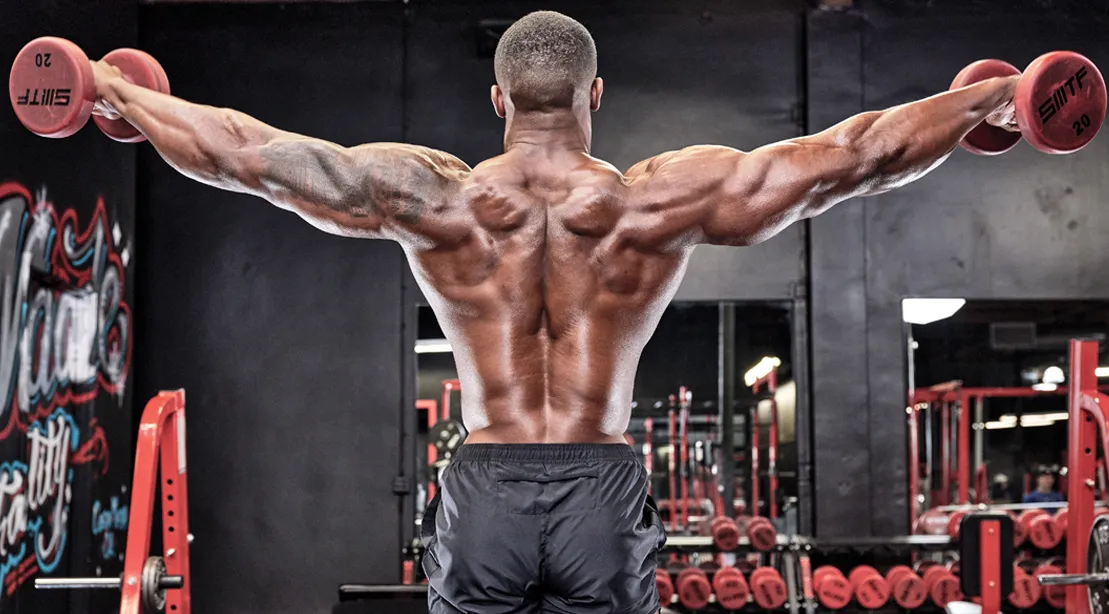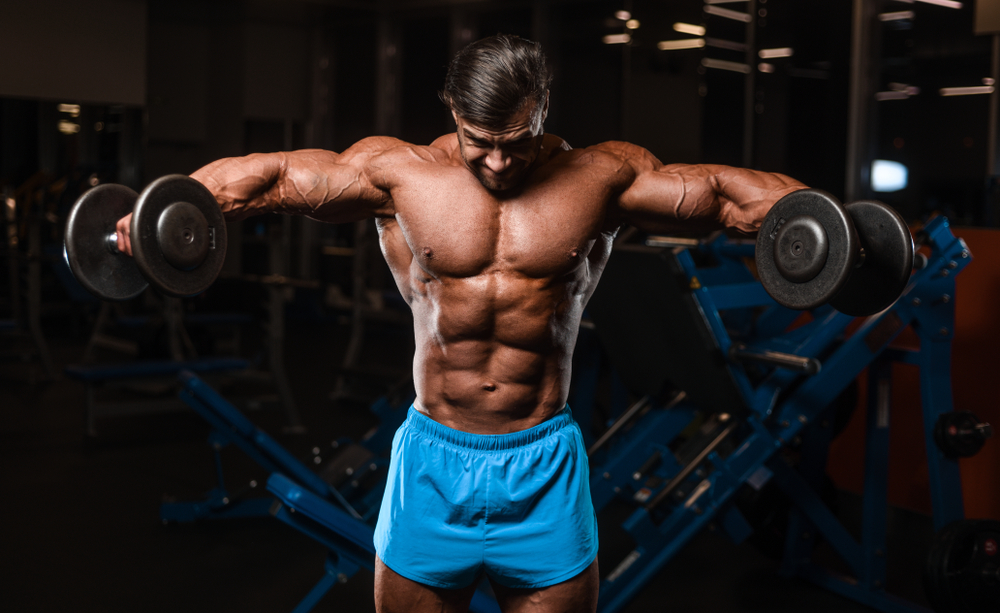Best Side Delt Exercises for Wide Shoulders: The Complete Guide
When people say they want “capped shoulders” or a broad, V-tapered look, what they’re really chasing is side deltoid development.
The side (lateral) delts create the roundness and width that make your upper body stand out — both in the gym and on stage.
But here’s the truth: most lifters undertrain the side delts or train them inefficiently. Endless barbell pressing won’t cut it.
If you want 3D shoulders, you need to target the side delts directly with smart programming and exercise selection.
This guide covers:
- Anatomy & function of the side delts
- Why they’re essential for physique and performance
- The best exercises for side delt size and strength
- Training strategies for different experience levels
- Practical programming examples you can use today
Side Deltoid Anatomy & Function
The deltoid has three heads:
- Front (Anterior) Delts – Assist in pressing and front-raising.
- Side (Lateral) Delts – Abduct the arm (lifting it out to the side), responsible for shoulder width.
- Rear (Posterior) Delts – Pull the arm back, crucial for posture and balance.
The side delts specifically:
- Create the illusion of width (aesthetics).
- Stabilize the shoulder in pressing and pulling.
- Respond best to moderate weights, higher reps, and strict form.
Why the Side Delts Matter
- Aesthetic Impact – They add that “capped” look, broadening your frame.
- Strength Balance – Strong side delts prevent front-delt dominance and shoulder imbalances.
- Pressing Support – While they aren’t the prime movers in presses, they assist and stabilize heavily.
- Injury Prevention – Balanced delt development protects the shoulder joint.
The Best Side Delt Exercises
These movements cover a spectrum from isolation staples to compound variations:
Dumbbell Lateral Raise (Classic Builder)
- Go-to isolation move for lateral delts.
- Use moderate weight, strict form, and controlled tempo.
- Tip: Slightly lead with the elbows, not the hands, to better engage the side delts.
Cable Lateral Raise (Constant Tension)
- Unlike dumbbells, cables provide resistance through the entire range of motion.
- Perform one arm at a time for maximum focus.
Machine Lateral Raise (Stability + Volume)
- Great for pushing volume without worrying about balance.
- Ideal as a finisher for side delts.
Lean-Away Lateral Raise (Mechanical Advantage)
- Stand next to a cable machine, lean slightly away, and raise the arm.
- Places the delt under tension at its strongest range of motion.
Arnold Press (Front + Side Integration)
- While it hits front delts more, the side delts engage strongly in the rotation.
- Useful accessory for lifters who like pressing variations.
Upright Row (Caution: Use Smartly)
- Works side delts when performed with wide grip and lighter weight.
- Avoid pulling too high (shoulder safety).
Training Strategies
For Beginners:
- Stick to 2–3 side delt movements per week.
- Focus on dumbbell lateral raises and cables with perfect form.
- Example: 3×12–15 dumbbell laterals at the end of push day.
For Intermediates:
- Increase frequency (train delts twice weekly).
- Use a mix of dumbbells, cables, and machines.
- Employ drop sets and supersets for metabolic stress.
For Advanced Bodybuilders:
- Train side delts 3x weekly in varied rep ranges (10–20).
- Incorporate mechanical drop sets (dumbbell lateral raises → lean-away cable raises → machine laterals).
- Use high-intensity techniques like partials, slow negatives, and isometric holds.
Programming Side Delts in Your Routine
Option 1: Push Day Finisher
- After presses, hit 3–4 sets of lateral raises (12–20 reps).
Option 2: Shoulder-Focused Day
- Pressing (compound base)
- Lateral raises (dumbbell + cable)
- Rear delt work (balance)
- Finisher: machine lateral raises or upright rows
Option 3: Daily Volume Strategy (Advanced)
- Add 2–3 sets of laterals to multiple workouts throughout the week.
- Keeps side delts under frequent stimulation without burning out.
Common Mistakes to Avoid
❌ Going too heavy on lateral raises (turns into traps workout).
❌ Using momentum and swinging the dumbbells.
❌ Overemphasizing presses and neglecting isolation work.
❌ Poor mind-muscle connection.
✅ Instead, go lighter, focus on controlled reps, and hit them often.
Practical Takeaways
- Side delts are key to width, balance, and a 3D physique.
- They need direct isolation work, not just pressing.
- Best growth comes from high frequency, high volume, and strict form.
- Beginners should focus on mastering laterals; advanced lifters should vary equipment and intensity methods.
Final Word
If you’re serious about building wide, capped shoulders, your side delts need their own spotlight.
Think of them as your physique’s “frame builders.” Train them intelligently — with frequent isolation, strategic intensity, and balanced programming — and your upper body will take on that unmistakable V-tapered look that separates bodybuilders from casual lifters.





